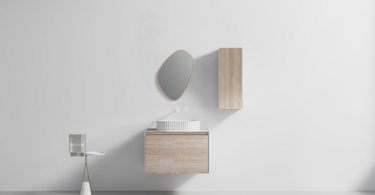With limited resources, water scarcity remains a top priority for South African homeowners. The bathroom consumes a tremendous amount of water, making it crucial for home owners to adopt water-efficient fixtures and practices. By upgrading to low-flow showerheads, faucets, and toilets, and by being mindful of water usage, households can significantly reduce their consumption.
Water Efficiency Label
“When selecting water-saving bathroom products, consider the Water Efficiency Label. Look for fixtures with a high rating, as this signifies they meet stringent water-saving standards. Additionally, consider your lifestyle: do you need a powerful showerhead for long washes, or would a gentler option suffice? Finding the right balance between functionality and conservation is key.” – Amadea Oberholzer, executive consultant and designer at Lifestyle Ceramics

Flow restrictors
“Flow restrictors are an easy and effective way to reduce water consumption instantly by attaching a disc to the end of your tap, cutting usage by nine litres per minute without affecting water pressure. Standard showerheads use up to 25 litres of water per minute, but water-saving showerheads reduce this to just six litres by restricting water flow and increasing air flow while maintaining pressure. Additionally, solar water heaters, or solar domestic hot water systems, provide a cost-effective means to generate hot water using free sunshine, making them suitable for any climate.” – Candace D’Amore, member at Durbanville Sanitary & Plumbing Supplies

Long-term solutions
“When creating sustainable bathrooms, the focus should be on long-term solutions. If you’re building or renovating, consider investing a bit more upfront in high-quality items. This approach ensures durability and reduces the need for future replacements or repairs, ultimately saving money and resources. Embracing the latest energy- and water-saving technologies, such as low-flow faucets, dual-flush toilets, and energy-efficient appliances, can significantly contribute to a more sustainable home. Prioritising quality and efficiency now will pay off in the long run, both environmentally and financially.” – Amadea Oberholzer, executive consultant and designer at Lifestyle Ceramics

A holistic approach
“Creating an energy- and water-efficient bathroom involves a holistic approach that combines smart design choices, eco-friendly fixtures, water-saving habits, and ongoing maintenance. Research tap flow rates and toilet flush rates thoroughly. Consider installing energy-saving LED lighting and investigate the production and manufacturing practices of the products you purchase, ensuring that the manufacturers share a commitment to the Live Green ethos.” – Nicole Russell, marketing manager at Italtile











Leave a Comment